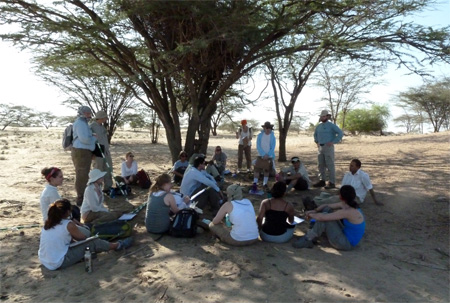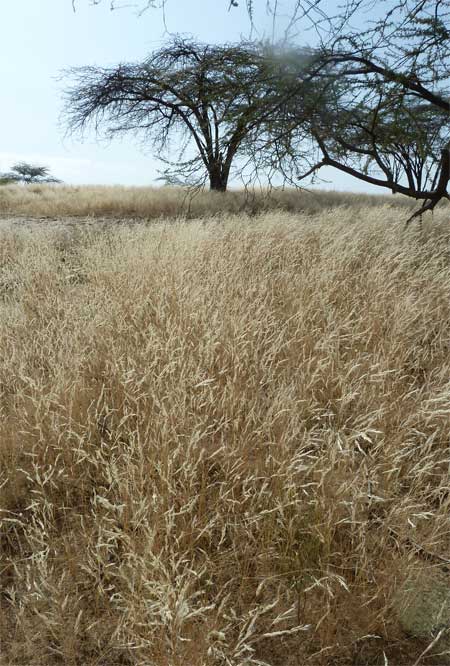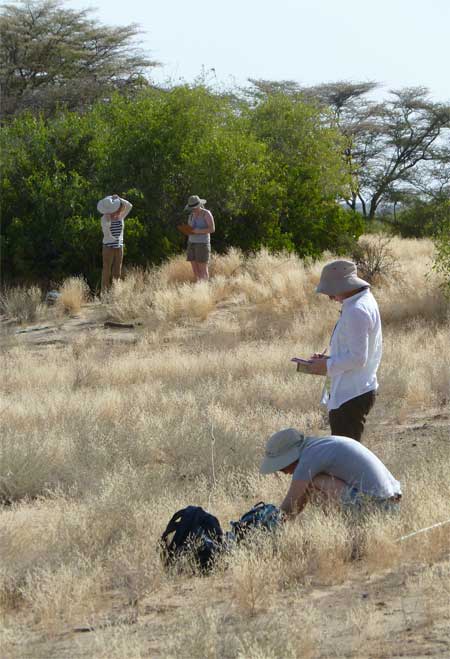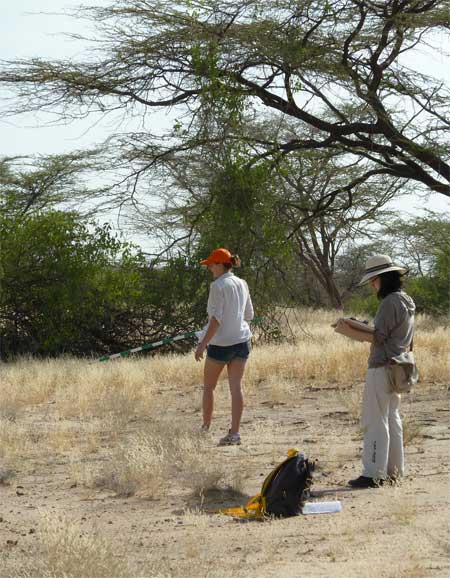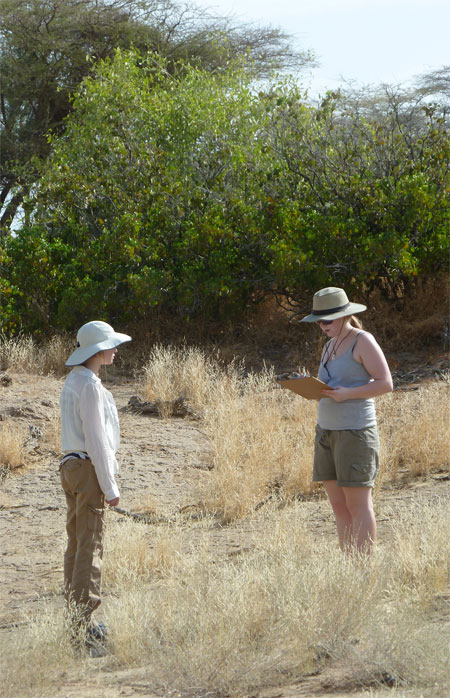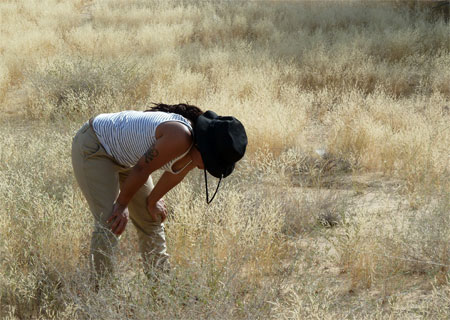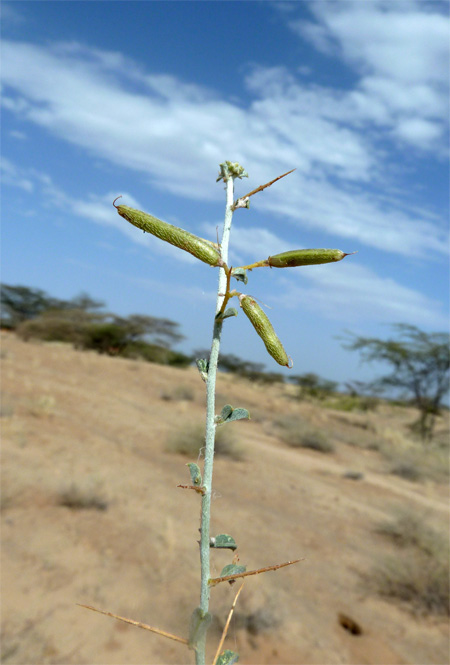The Spring Field School has taken off at the Turkana Basin Institute at South Turkwel. Students have started exploring the ecology of the area.
Understanding ecology involves an appreciation of the vegetation. Students have been conducting vegetation surveys to learn about the density, patterns and relationships between plants at TBI. We have been spending time looking at plants and insects. The students have been walking around and taking frequent stops in the shade to talk about the amazing life and processes that we are experiencing and studying.
We found an interesting difference between the area within TBI (which is protected from grazing by goats) and the surrounding area, which is over-grazed by goats. Grazing appears to have a significant impact on the number of individual plants surviving along transects.
There were almost twice as many healthy adults and seedlings of Indigofera spinosa, one of the most common and important plant species in the desert and bush of Turkana. We also found that there are many more pods on Indigofera bushes inside the TBI compound. This suggests that over-grazing has impacts on not just the presence and abundance of plants, but also on their ability to reproduce…

